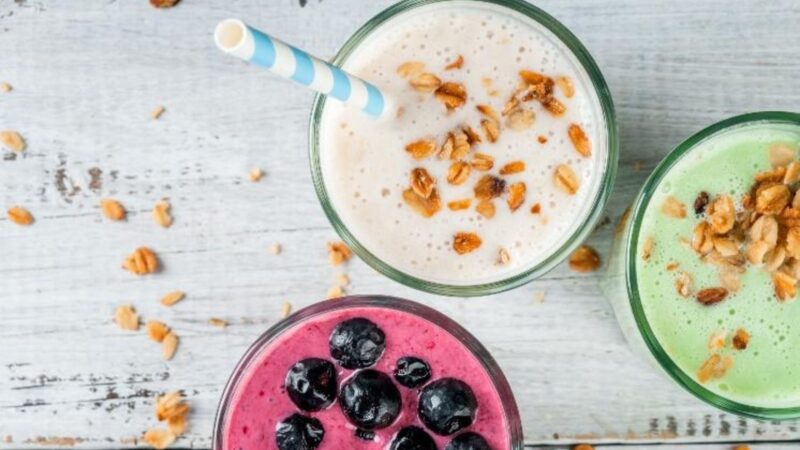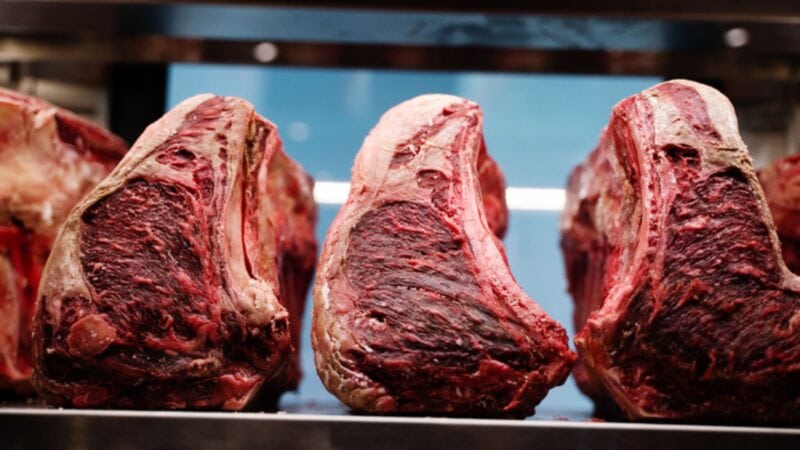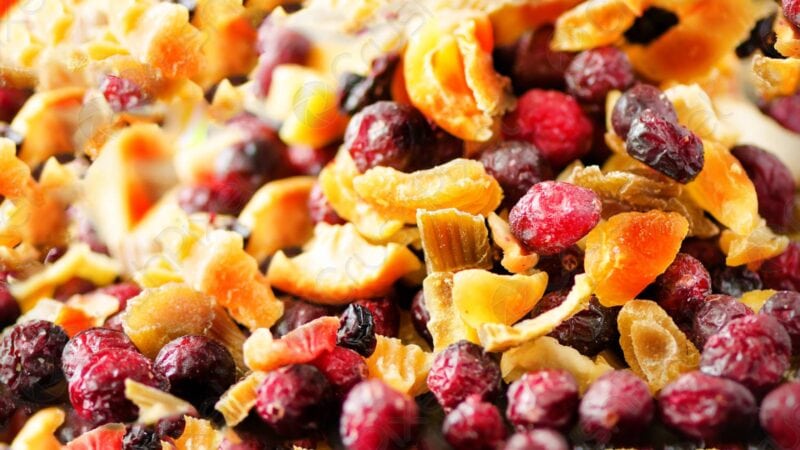Everything You Should Know About The Candida Diet
Standard Candida yeast concentrations promote optimal health, nutrition absorption, and digestion. However, too much yeast can cause infections in the body or on the skin. The Candida diet is a stringent diet designed to treat Candida infections.
The Candida diet is a low-sugar, anti-inflammatory diet that supports gut health while eliminating the carbohydrates that fuel Candida overgrowth. Non-starchy vegetables, low-sugar fruits, non-glutinous grains, dairy products, and fermented foods are all part of the diet (1). It may help you eliminate Candida symptoms like bloating, indigestion, yeast infections, lethargy, nausea, diarrhea, and gas by boosting your gut health and restoring the balance of the bacteria and yeast that reside within your body. This article details the Candida yeast infection diet, including its effectiveness, potential health advantages, and food items included and avoided in the diet.
What is a Candida Yeast Infection?
Candida albicans is the yeast that causes the majority of yeast infections. Candidiasis is a yeast infection caused by Candida. It affects the mouth, throat, intestines, and vaginal area. Vaginal candidiasis is the medical term for yeast infection in the vagina (2). The yeast Candida albicans can be found in the mouth, digestive tract, and vagina. A good balance of this yeast and bacteria aids in the elimination of dangerous organisms both within and on the body. When this delicate equilibrium is upset, Candida develops unnaturally, resulting in yeast infections. It causes oral yeast infection if it develops in the mouth and vaginal yeast infection if it grows in the vagina (3).
Candida albicans is the most common cause of yeast infection in women. Most women will have this illness at some point in their lives. Vaginal yeast infections affect around 75% of women worldwide at some point in their lives. A vaginal yeast infection causes various symptoms, including redness, swelling, itching and soreness in the vaginal and vulva areas. Other symptoms include a burning feeling when urinating and intercourse (4).
The first thing you should do if you have a yeast infection is to call your doctor. Proper medical attention is required to treat a Candida yeast infection completely. Several foods and dietary adjustments can also aid in treating this illness.
What is the Candida Diet, and How Does It Work?
The Candida diet promotes immunity while improving gut health and reducing inflammation. It requires people to avoid foods and diets that promote Candida development.
A Candida diet involves eliminating diets rich in added sugars and carbs, eating fermented foods, and avoiding pro-inflammatory factors such as gluten and processed foods (5).
Candida diet foods include non-starchy vegetables, fermented foods such as yogurt and sauerkraut, low-sugar fruits such as blueberries, proteins like fish, and pseudo-grains such as quinoa. The diet is intended to provide appropriate nutrition while lowering inflammation and preventing Candida Albican’s further proliferation. The primary goal of the Candida diet is to reduce inflammation and balance the bacterial concentration in the body.
What Foods Should I Eat On This Diet?
To prevent yeast infections, you should follow a Candida diet by incorporating the following healthy foods into your routine.
Coconut oil
Coconut oil is a fatty oil with several health advantages, including improved digestion and metabolism. This oil is made from the white pulp of coconut. Coconut oil also has antimicrobial qualities, making it helpful in combating yeast infections(6).
Lauric acid is responsible for antifungal and antibacterial activities. Lauric acid is abundant in coconut. It is a saturated fatty acid that inhibits bacterial and fungal growth. According to research, lauric acid is particularly powerful against Candida yeast.
Probiotics
Antibiotic overuse increases the risk of Candida infection by destroying beneficial bacteria in the stomach. These bacteria defend the body from Candida infection by competing with them for food and space(7).
Probiotics can help replenish these populations of helpful bacteria and are often found in fermented foods like yogurt. They can also be taken as supplements. They are very useful in preventing Candida yeast infections. For example, research shows that lozenges containing two strains of the probiotic Lactobacillus reuteri dramatically reduced the number of Candida yeasts(8).
Cheese
Cheese containing vital probiotics such as acidophilus aids in the treatment of yeast infections. The most probiotic soft cheese is Gouda. Probiotics may also be found in cheeses such as cheddar, mozzarella, and cottage cheese.
Probiotics in the food are beneficial, but only if they are resistant to stomach acid and make it into the gut. The composition of soft cheeses is ideal for supplying probiotics to the gastrointestinal system. The pH of the cheese influences probiotic survival and proliferation in the intestines. As a result, soft cheese presumably provides more intact microorganisms to the GI tract. These beneficial probiotics aid in the prevention of Candida yeast infections both externally and internally (9).
Garlic
Another plant food with antifungal effects is garlic. This antifungal effect is partly due to allicin, a chemical produced when fresh garlic is crushed or destroyed. Garlic is a safe and healthy way to season your food. It may also complement traditional Candida therapies (10).
Foods With Low Sugar Content
When sugar is abundantly available in their environment, yeasts develop quicker. Excessive blood sugar levels increase your risk of Candida infections. Consuming refined sugar and lactose-rich dairy products promotes Candida yeast development. Eliminating excessive sugar food consumption removes the possibility of developing a Candida yeast infection completely (11).
Candida yeast infection can be prevented easily by preventing the uptake of the following foods.
- Foods rich in simple sugar
- White flour
- Rice
- Starchy vegetables
- Fruit high in sugar
- Dairy products high in lactose
- Simple sugar
- Artificial sweeteners
The following is the Candida diet food list that is nutrient-rich and great for overall health.
- Fruits with low sugar content
- Non-starchy vegetables
- Healthy proteins
- non-glutinous grains
- Healthy fats and oils
- Low-mould nuts and seeds
- Herbs, spices & condiments
- Sweeteners like stevia and monk fruit
- Several dairy products
- Drinks like chicory coffee and herbal teas
- Fermented foods
When it comes to your personal health, it’s always better to prevent rather than treat after the fact. That’s why the Candida Diet is such an important part of everyday health. By eating right and following this diet, you will be able to promote yeast infection immunity within your body, while simultaneously improving gut health and reducing inflammation. Remember that a new diet is a big decision, so be sure that no matter what diet you go on, do your research and determine whether or not the diet is right for you.
About The Author
Dan Jackowiak, Nc, HHP, is the Founder of Yeast Infection Advisor. Dan is a Holistic Healthcare Practitioner and Nutritional Consultant that personally suffered from yeast and bad bacterial overgrowth of the gut for most of his life. The information on his website is a combination of his own nutrition and holistic training, life experiences, collaboration with fellow experts on his team, and over 18 years of studying medical research on candida yeasts infections of all types, which has allowed him to take his life and health back help others overcome yeast-related health problems and digestive problems of all kinds.
- References
1. Bartlett JG. Guidelines for treatment of candidiasis. Vol. 12, Infectious Diseases in Clinical Practice. 2004. p. 245–6.
2. Pfaller MA, Diekema DJ. Epidemiology of invasive candidiasis: A persistent public health problem. Vol. 20, Clinical Microbiology Reviews. 2007. p. 133–63.
3. Eddie DA. The laboratory diagnosis of vaginal infections caused by Trichomonas and Candida (Monilia) species. Vol. 1, Journal of medical microbiology. 1968. p. 153–9.
4. Bernstein JA, Seidu L. Chronic Vulvovaginal Candida Hypersensitivity: An Underrecognized and Undertreated Disorder by Allergists . Vol. 6, Allergy & Rhinology. 2015. p. ar.2015.6.0113.
5. SrbeLtZr.
6. Bergsson G, Arnfinnsson J, Steingrímsson Ó, Thormar H. In vitro killing of Candida albicans by fatty acids and monoglycerides. Vol. 45, Antimicrobial Agents and Chemotherapy. 2001. p. 3209–12.
7. Hempel S, Newberry SJ, Maher AR, Wang Z, Miles JNV, Shanman R, et al. Probiotics for the prevention and treatment of antibiotic-associated diarrhea: A systematic review and meta-analysis. Vol. 307, JAMA – Journal of the American Medical Association. 2012. p. 1959–69.
8. Kraft-Bodi E, Jørgensen MR, Keller MK, Kragelund C, Twetman S. Effect of Probiotic Bacteria on Oral Candida in Frail Elderly. Vol. 94, Journal of Dental Research. 2015. p. 181S-186S.
9. Ganesan B, Weimer BC, Pinzon J, Dao Kong N, Rompato G, Brothersen C, et al. Probiotic bacteria survive in Cheddar cheese and modify populations of other lactic acid bacteria. Vol. 116, Journal of Applied Microbiology. 2014. p. 1642–56.
10. Borlinghaus J, Albrecht F, Gruhlke MCH, Nwachukwu ID, Slusarenko AJ. Allicin: Chemistry and biological properties. Vol. 19, Molecules. 2014. p. 12591–618. 11. Man A, Ciurea CN, Pasaroiu D, Savin AI, Toma F, Sular F, et al. New perspectives on the nutritional factors influencing growth rate of Candida albicans in diabetics. An in vitro study. Vol. 112, Memorias do Instituto Oswaldo Cruz. 2017. p. 587–92.

Deepa Mahar is an independent blogger and admin of DeepAdvices who is exploring the beauty of the blog writing from a variety of subjects and books to health, science and others. She believes the blog would be helpful to the reader in the context of knowledge. She is post-graduated with a degree of Biotechnology.






